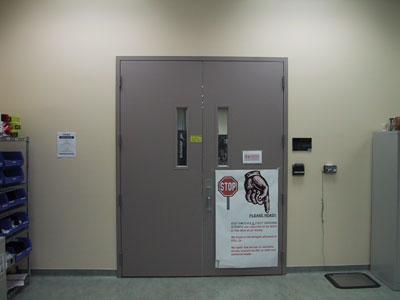Inside Intel: From Silicon to the World
by Anand Lal Shimpi on February 11, 2002 3:58 AM EST- Posted in
- CPUs
Intel’s Other Role: The CPU Doctor
Moving on past the world of neat ideas that are years away we journeyed to the present. One of the things we take for granted whenever we upgrade to that Athlon XP 2000+ or Pentium 4 2.2GHz processor is all the time and effort that went into the processor’s design and development. We’ve already introduced you to some of the development that goes on architecturally but what about the critical 6 - 8 months before a CPU is brought to market?
When a CPU design finally gets made into a piece of silicon, this silicon is known as an A0 stepping core – the first revision of the core that’s ever made. Before anyone gets to plug it into a motherboard and run it, it is sent off to a group of Intel lab technicians whose job is to try and uncover any problems with the processor.
There’s very little we can show you pictorially about this process because of the proprietary nature of some of the devices Intel uses but we’ll try our best to describe it to you.

This is the furthest our cameras would go, what's beyond these doors is quite
interesting.
Problems in this A0 silicon are detected using what is known as a Laser Voltage Probe (LVP) whose name clearly explains its function. One of the Intel lab engineers referred to it as a glorified multimeter which is pretty close to the truth. The probe is contained within a very large machine that examines portions of the silicon and compares the wired logic to the way the processor is supposed to behave at that point in the silicon. For example, a LVP operator would sit at a workstation and control the position of the probe on the die. Upon coming to a part of the die the operator would like to examine he/she will be presented with waveform data on how that particular circuit operates taken via the probe, as well as actual pictures of the transistors that the probe is “looking” at. Alongside all of this, the operator is given a complete logic diagram of the processor to act as a reference of what the probe’s seeing. So instead of seeing a random group of transistors with certain waveform data the operator is able to compare that to a symbolic circuit diagram to help determine the problem.
After a problem is determined, the chip architects are called back in and informed of the problem. They then go to work on a fix to hopefully solve the problem. But instead of throwing out the bad silicon and producing an entirely new chip with what should fix the problem, Intel has a way of performing “surgery” on an existing piece of silicon that rapidly speeds up development time.










1 Comments
View All Comments
Dr AB - Monday, May 11, 2020 - link
Why using 2,147,483,646 ..?? Why exactly this number and adding 1 to it? .. proof of 10GHz? Why not just 1+1 ..??